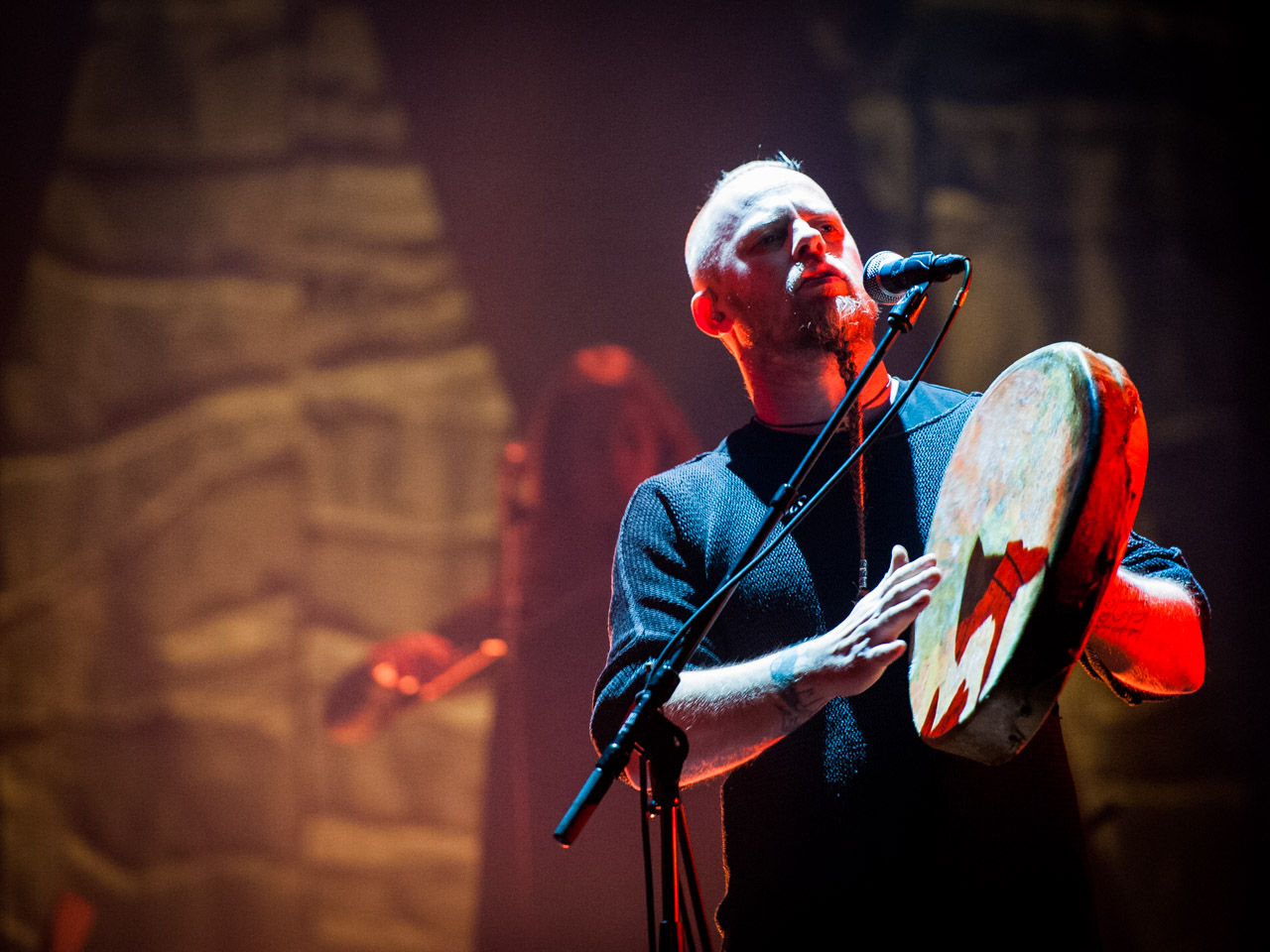
Eivar Selvik in TivoliVredenburg, foto Roy Wolters
For those eagerly awaiting the release of Wardruna’s Kvitravn, it’s not merely a record on the purchase list for this year. There’s a significance to Wardruna’s music to its listeners that borders on the spiritual. It makes sense, as that is where the music by Einar Selvik comes from. It hails from a deeper place, where we reconnect with nature, our past and the sanctity of the earth. And through the years, the audience for the Norwegian group has grown and grown.
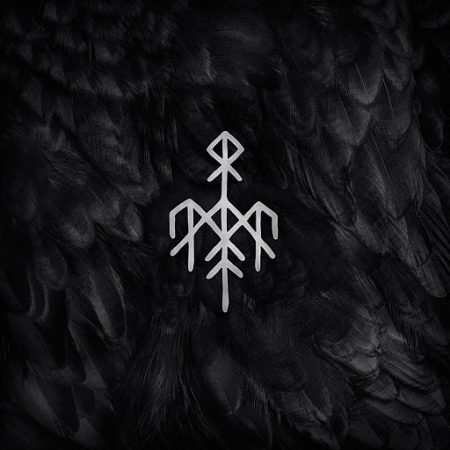 Tekst: Guido Segers
Tekst: Guido Segers
Kvitravn, release date 22 January 2021, heralds’ new beginnings. It’s the first full length album outside of the acclaimed Runaljod trilogy. It breaks with the original project yet is a continuation. Interestingly, the title is the same as the alias Selvik used in his black metal days, as part of Gorgoroth, Jotunspor and other projects. Things come full circle, as it is often in our ancient traditions, which are closely related to the natural cycles. Birth, death, rebirth. We spoke with Einar Selvik on the latest album, or complicated histories, his creative process, the sanctity of nature, and the messages in Wardruna’s music. Enjoy reading this, and keep your eyes peeled for the white raven.
First of all, how are you doing?
I’m doing good. Of course, it’s been busy times with the release coming in. That’s a positive thing in my line of work. I’m chronically busy, actually. Not being able to tour and stuff like that, is of course, sad and strange, but I’ve been busy in the studio working with the music for the game Assassin’s Creed: Walhalla and stuff like that. So it hasn’t been a downtime at all—more than enough work to do.
You have the new album out now. What has the trajectory been like since the trilogy (Runaljod – Gap var Ginnunga, Yggdrasil, and Ragnarok) and compilation album Skald to Kvitravn?
In a way, for me, it is hard to separate this from especially the trilogy. It feels like a continuation. During those 15 years, I was so focused on the trilogy, but there were some things I wanted to do that I put in the drawer for later. Revisiting a lot of these ideas and thoughts was part of the process after the trilogy when I was thinking about what comes next. So, in many ways, it is a continuation. Perhaps, on this album, I go more into the details, the specifics, and the human sphere of things, our relation to nature, and how we define ourselves as a species according to older traditions. It’s more complicated than our body and consciousness, or if you are a religious person, you also have a soul. But in the old ways of seeing it, it is much more complex. The album sort of explores some of these concepts in depth.
There was a series of brief documentaries as part of the album’s promotion, in which you touch upon topics such as animism, traditions, and history. Are these aspects you are referring to?
Animism (the belief that objects, places, and creatures have a soul) has always been central to Wardruna and what our music is about. It has been so since the beginning. The topics in that documentary are definitely the backbone of this album, but also relevant to previous works, I would say.
Part 1 of the documentary:
The topics you are working with are incredibly complex and hard to digest in today’s world. I’ve just finished the book Children of Ash and Elm, which is an excellent resource about Viking history. What one learns is how complicated and multidimensional it is. We know so little, and there’s so much more than warriors there. As an artist, do you feel the desire to go beyond that simplistic view and be properly understood?
I have the book too. Well, first of all, I have to specify I never intended to replicate music from a specific time period. I use instruments and ideas that go back to the stone age, the bronze age, the migration period, the Viking Age, and even modern times. The idea is that it is kind of timeless and still has the potential to speak to us in the same manner it used to do.
Yeah, I do feel a responsibility. I always say, don’t climb into a tree without solid roots. Doing thorough research into the musicology and the themes I’m working with, approaching them in a scholarly manner… So I have solid ground before I go into these intuitive and creative processes. That’s very much at the core.
As you say, it’s so much more than warfare; that’s just a small part of it. That’s one of the many reasons why I never use the word Viking to describe my work. I prefer the word Norse or whatever. Because defining a whole culture based on what a small group of people did for a short time, that’s entirely wrong. On a personal level also, I’m not so fascinated with that whole era and that warrior culture. It is interesting, and I understand this big focus on Vikings and warfare because they were rulers of their times in many ways. But still… If you would make a series or a game that would be authentic, it would involve a lot of time farming, cooking, or spinning wool, and that’s not so sexy in a way. It’s understandable, but I don’t share that fascination. For me, there are so many things that represent this culture in a more complete way.
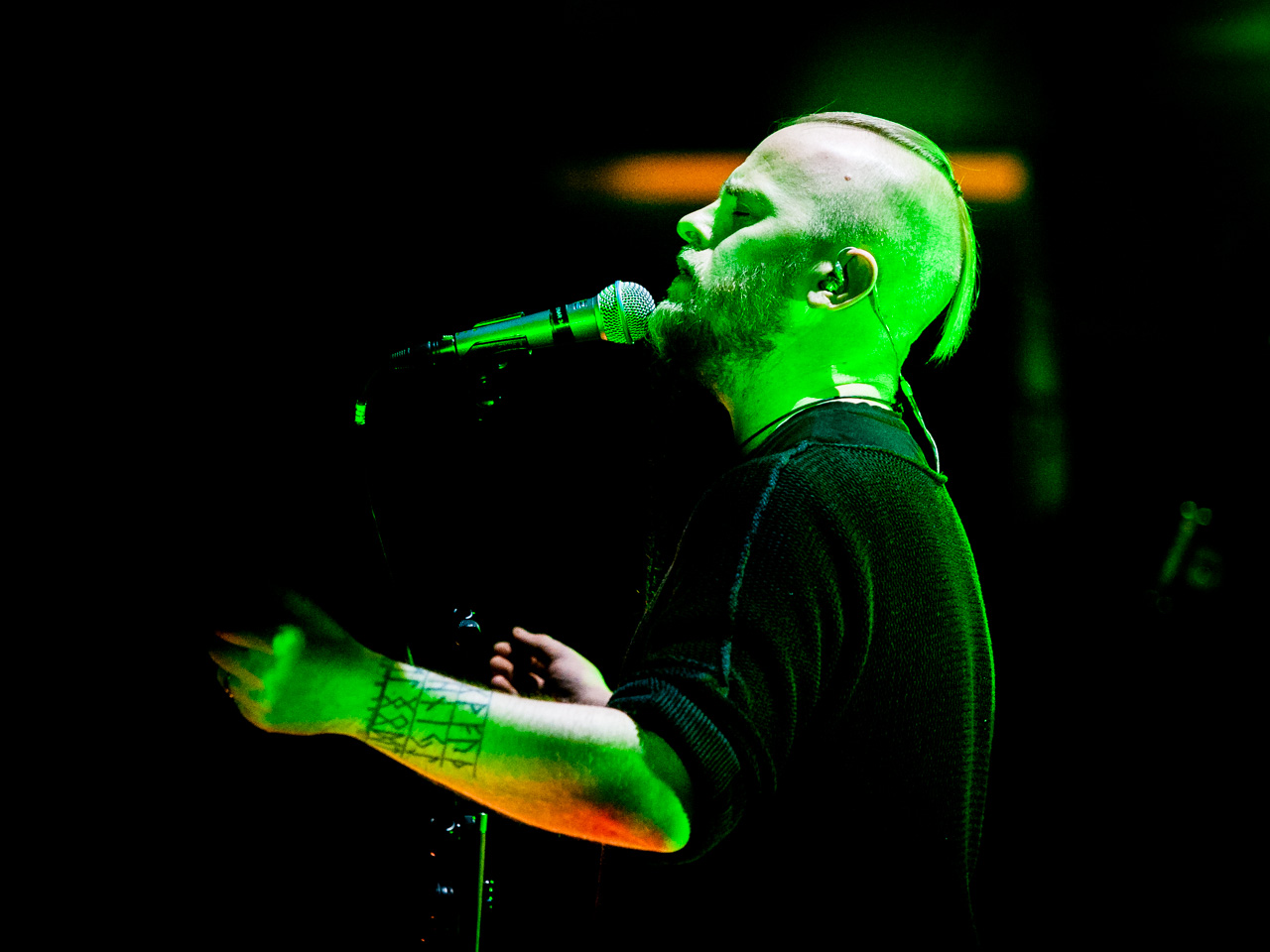
Eivar Selvik in TivoliVredenburg, foto Roy Wolters
There are actually simulation games like that. Yet, you did make music for the Assassin’s Creed videogame and, of course, the TV-show Vikings, which both, in their way, represent that cultural snacking and enable people only to take that element from it. Is that why you get involved in these projects because there is a certain contradictory element in there?
Yes, well…. You have to take it for what it is. The Vikings TV-show or a video game like that, for example, is made for entertaining the masses. For it to be a success in the modern-day, it needs to play on historical correctness and balance it with the modern notion of what that time is. You need both to make it catchy, and with that in mind, you have to deem and judge it by what it is. My expectation is not that they should make a TV show to entertain only history nerds like me; that would probably not be a very successful show in a broader perspective.
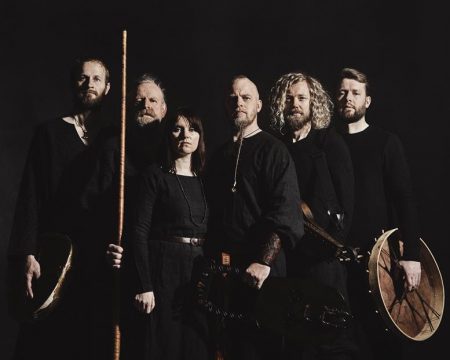 For me, it is, as you say, an opportunity to highlight certain things, like the poetic culture, which is one of the things I really wanted to get across in both my work with Vikings and Assassin’s Creed. Of course, it’s Assassin’s Creed, so you see a lot of the fighting element, but I think they did a great job in including a lot of other things. On the musical side, I really wanted to give voice to the oral tradition, the skalds, which we often forget but were so central for the people, their culture, and the courts. Even for the aristocracy, it was a central part. This allowed me to actually give voice to them and give voice to that and how that culture might have been. I understand the contradiction, but I don’t see it as one. My expectations are based on what they set out to do and what is logical in contemporary times. In any case, I think it is a step in the right direction because they are, of course, removing some stereotypes… and perhaps creating new ones. But also illuminating them and creating a more nuanced view of the times.
For me, it is, as you say, an opportunity to highlight certain things, like the poetic culture, which is one of the things I really wanted to get across in both my work with Vikings and Assassin’s Creed. Of course, it’s Assassin’s Creed, so you see a lot of the fighting element, but I think they did a great job in including a lot of other things. On the musical side, I really wanted to give voice to the oral tradition, the skalds, which we often forget but were so central for the people, their culture, and the courts. Even for the aristocracy, it was a central part. This allowed me to actually give voice to them and give voice to that and how that culture might have been. I understand the contradiction, but I don’t see it as one. My expectations are based on what they set out to do and what is logical in contemporary times. In any case, I think it is a step in the right direction because they are, of course, removing some stereotypes… and perhaps creating new ones. But also illuminating them and creating a more nuanced view of the times.
Over to Kvitravn, can you tell me what the white raven is and what it means to you? Though you have stated there is no relation to your black metal alias as Kvitravn and this record, it tells us how close this theme is to you.
It is; it’s what inspired me to take that name in the first place. I have long been fascinated by ravens, and I have a form of totemic relationship. Of course, the raven itself is such a central animal in the Norse tradition and mythology. Not only in the north but globally, the raven is seen as a messenger between this world and the next. In the north, it is seen as the trickster, the animal embodiment of the human mind and memory. So, it’s almost seen as the human in nature, in animal shape. It carries a lot of meaning, and then you have these sacred white animals, which is also a global phenomenon. Whether it’s white elephants, serpents, lions, or reindeer, they often come with a prophecy of some form of change, renewal and enlightenment. The image of the white raven, the coming or return, labeling an album that, to me, is a powerful symbol and perhaps even a hope and call for change.
If you would condense it in a way to a modern factor of change, what is it that you hope people take from this? Because through your words, also in talking about animism and your creative process, which is so tightly interwoven with the connection to nature, I detect an environmentalist viewpoint.
You are, of course, correct. But I hate preaching or claiming to know any truth, saying what other people should do… But if my music has some form of a message within it, it would be that I do think it would be beneficial if we all had a more animistic view of the world. What I mean by that is the idea that nature is something sacred, something we are a part of and not the rulers off. That doesn’t have to be a spiritual or religious thing; it’s an attitude. The second we took that sacredness out of nature and put it up in the sky or completely disregarded it, that’s when we got into trouble. I think it would benefit us all if we all had a more respectful view of nature as something we are the caretakers of in a way. It’s something we should respect, something sacred in a way.
It’s simple. I think it represents all of my music. You can look upon many of these things as spiritual things, but it doesn’t have to be. It’s something that is relevant, whether you are a spiritual person or not. It’s an attitude, a philosophy; it’s something beyond those things. Timeless, universal, and highly relevant to all of us.
You spoke at Roadburn a few years ago about your creative process and explained the deep connection to nature when you actually compose and even record your music. For the video of Lyfjaberg, you climbed up a mountain. How was that during the creation of Kvitravn?
The inspiration can come from many things. As you say, perhaps my main muse is when I walk; it’s when I see and hear things. Sometimes it comes from the instruments, poetry, or the themes I work with have such a strong image that I see and hear the sound of it, and then it’s about chasing down these things. This album follows the same kind of creative concept, where the themes themselves find the instrumental needs, where I record, what state I’m in when I record. I try and go as far as I can in interpreting the theme I’m working with on its own premise. Capturing it, if you will.
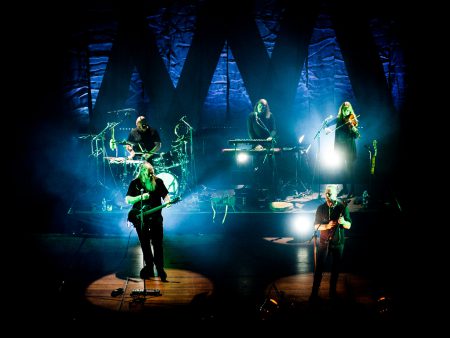
Ivar Bjørnson & Eivar Selvik in TivoliVredenburg, foto Roy Wolters
Some recordings on this album have been done in places that have a connection to the theme I’m working with, the time of day, or a state of mind. It’s hard to give you concrete examples of it, but I still work in the same way. There are quite some recordings in forests, sacred places, and on burial mounds.
While listening to it, I felt more buildup and cinematic quality, if I can use that term, compared to the previous records. Do you think your other projects affect the sound you create in that direction?
I don’t think there has been any conscious decision on changing it. Of course, everything I do, every song I write, I learn something from and build on in my work. That goes for everything in my life. I guess I’m always chasing this soundscape; I feel I’m getting closer and closer to my visions. I get better at replicating what is in my head when I’m inspired, hearing, and envisioning these songs. That’s an ongoing organic process, but not a conscious process of decisions. I try to let the song go where it wants to go, rather than me trying to give it any kind of shape.
You mentioned before not wanting to preach anything, and I want to get back to that for a moment. When you started Wardruna, it was singular, unique, and a new avenue. By now, Wardruna is a global phenomenon with dedicated fans around the world. Listening to Wardruna for them is usually not ‘just throwing on a record’; it’s more than that. Has this in any way affected how you see yourself as an artist and how you approach your art?
No, I try not to relate to that part. Fame, the growth of the band, that’s something I try to keep a distance from, especially when I’m writing my music. I’m not writing music for anyone else; I’m writing it for me. That’s my perspective. I’m writing music I want to hear, and if anyone can enjoy it, that’s fantastic, but not the reason I’m doing it. Which, I think, is a healthy way of looking at it.
I don’t think it would be good if I felt a pressure to create this or that, to adapt my art in any way. I don’t compromise. But, of course, it is challenging. You meet a lot of people, and I relate to the fact our music is growing. Yet, I try to keep a healthy focus on it and not feed my ego; it’s not about that. I try to distance myself from that side of it.
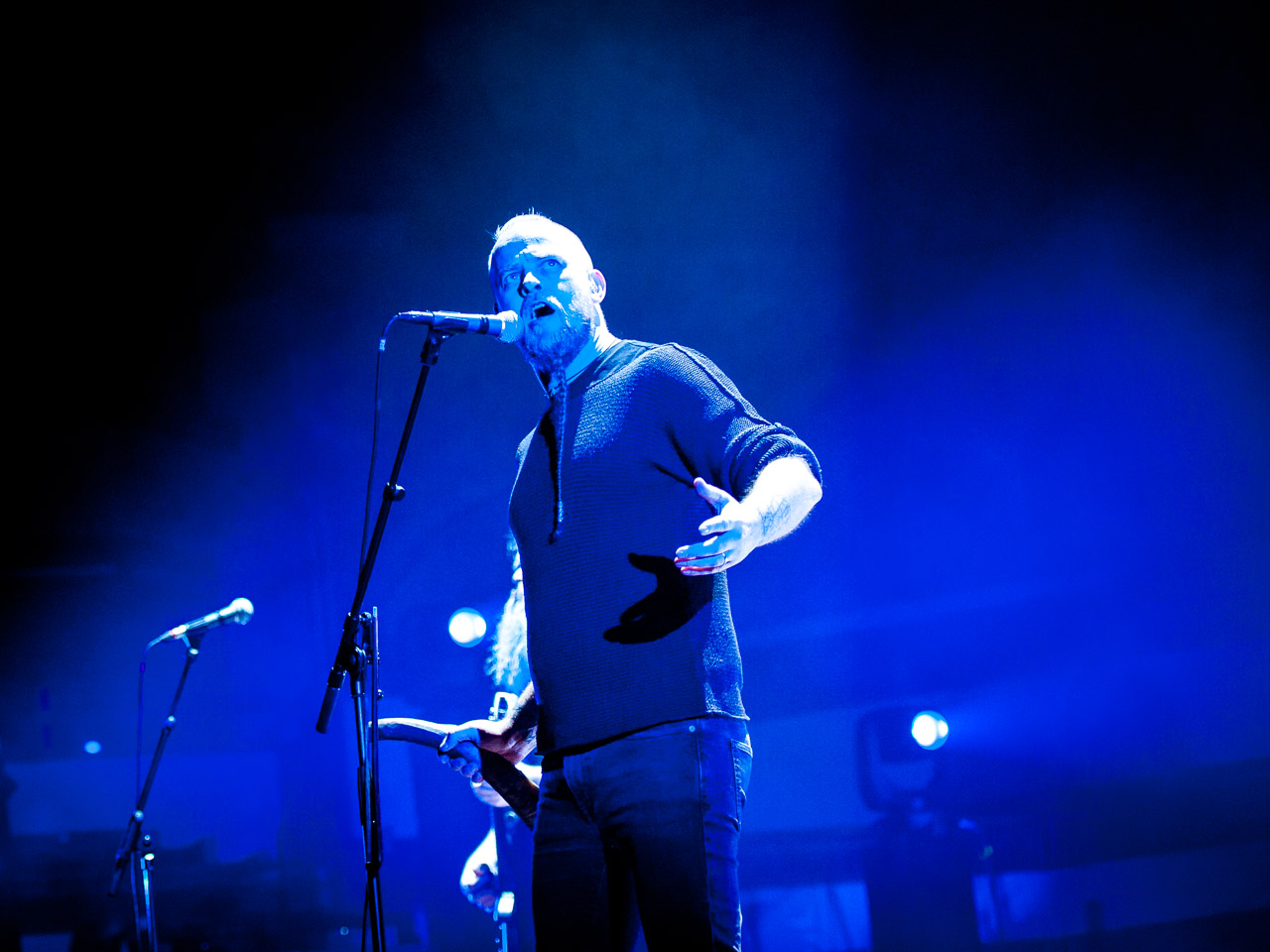
Eivar Selvik in TivoliVredenburg, foto Roy Wolters
What are the best compliments for you that you receive from listeners?
I don’t know, but it is always special to hear that people connect to it, which I hear often. It gives them something and awakes something healthy on a very personal level. That’s, of course, more than anyone can hope for. Many of these songs live their own lives in the world and give meaning to people. That’s a special thing and overwhelming in many ways.
This album has been ready to go for a while. You mentioned you’ve been busy, so I’m curious if you’ve already started looking for future musical directions for Wardruna?
To be completely honest, actually no. I’ve been so busy on the Assassin’s Creed project, which is an ongoing project. I’ve been very occupied with that, and this period has allowed me to pursue that in a more healthy way without touring on top of that. But, of course, if this period continues putting limitations on what we can and cannot do what we normally do, I will remain productive.
I always think about where to go and what things I want to do and give voice to. On a certain level, that process is ongoing, but I haven’t started recording or planning yet. I presume that is to come.
So those are my questions, just a personal anecdote I wanted to share. A few years ago at Roadburn, a photo exposition was posted, which giant concert photos. One photograph (by Paul Verhagen) of you displayed there was given to me as a wedding gift and now hangs in my living room. My 5-month old daughter has her playpen right beneath it and stares up at you a lot, to the point I’m worried she may be unclear which face is daddy.
*laughs* I’m honored to take part of your home. Give my best to your family!
Thank you very much Einar, best of luck on your release, and let’s hope things turn to normal so we can see Wardruna live again!
Same here! We always love coming to the Netherlands. We’ve always been received very well there, and it’s become our second home in many ways.
New album Kvitravn will be released next Friday on Janurary 22th in various physical formats, and will be available via the official merch store, among others. Newest single Skugge can be heard via Spotify.
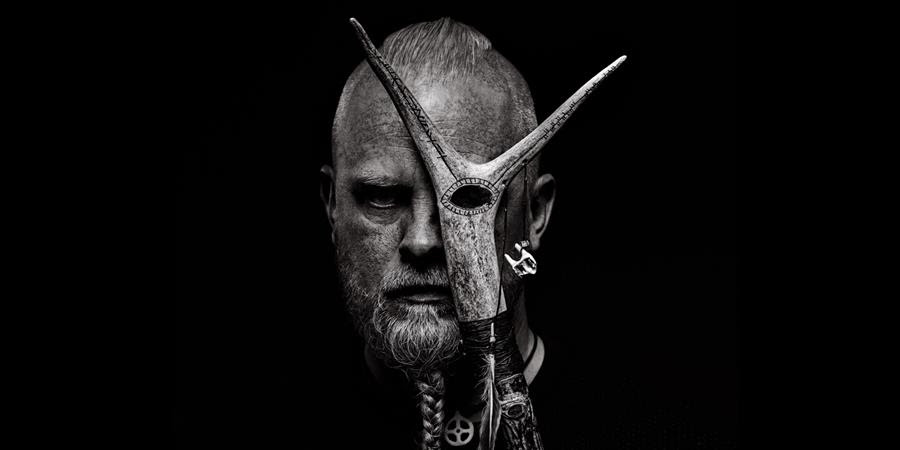
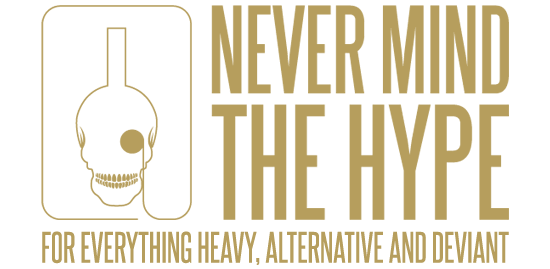
Nog geen reacties!
Er zijn nog geen reacties geplaatst.